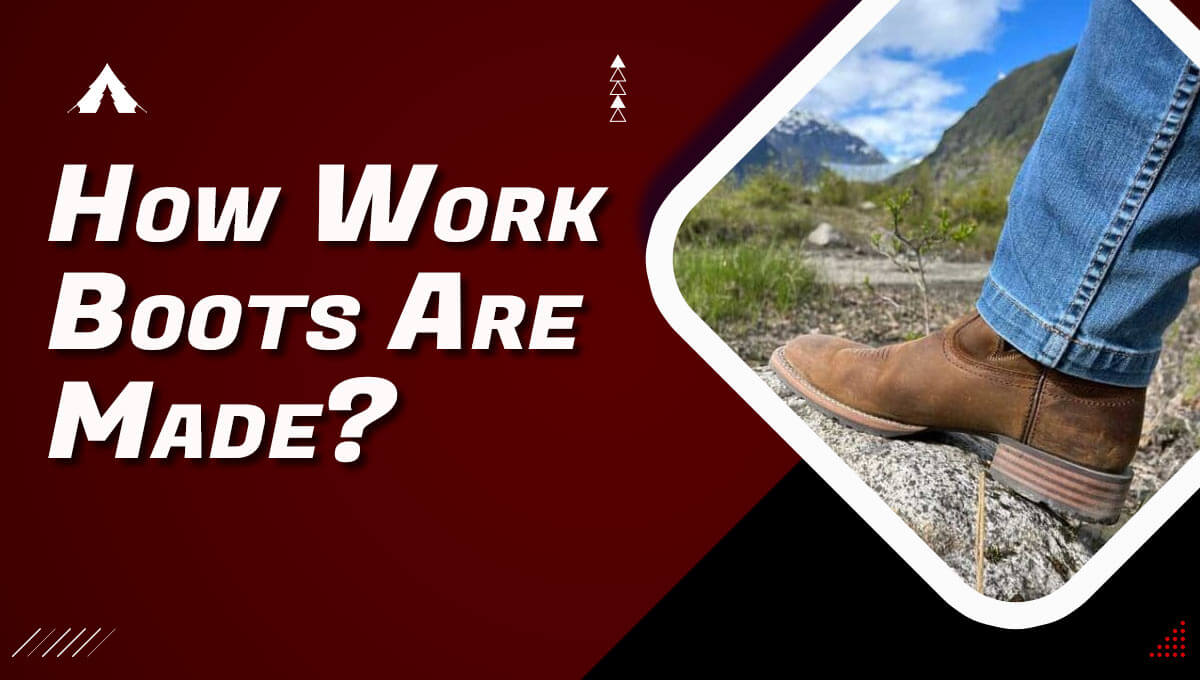Work boots are a staple in many industries, serving as essential personal protective equipment for construction, manufacturing, agriculture, and more workers. These sturdy and reliable boots are designed to withstand harsh conditions and provide comfort during long work hours. But have you ever wondered how work boots are made? In this article, we will take you through the intricate process of crafting these durable footwear, from the initial design to the final product.
Material Selection:
The production of work boots begins with the careful selection of materials. Quality is of the utmost importance in work boots, as they are subjected to various challenging environments and conditions. The primary materials used to make work boots are leather, rubber, and synthetic materials. High-quality, full-grain leather is famous for its durability, water resistance, and flexibility.
Design and Pattern Making:
Once the materials are chosen, the design and pattern-making stage come into play. Expert designers and pattern makers create detailed blueprints and patterns that outline the shape and structure of the boots. These patterns serve as a template for the cutting and assembly processes, ensuring that each boot is consistent in its design.
Cutting the Materials:
The selected materials, typically leather or synthetic textiles, are cut according to pattern. Skilled artisans use specialized cutting tools to ensure precision and minimize material wastage. This step is crucial in determining the final fit and comfort of the work boots.
Stitching and Assembling:
The cut pieces of leather or synthetic materials are then stitched and assembled. Work boots are known for their sturdy construction, achieved through precise stitching. The upper part of the boot is stitched together, and additional reinforcements may be added for extra durability.
Insole and Midsole:
Inside the work boot, an insole and midsole are added for comfort and support. Insoles are usually made of cushioning materials like foam or gel, while midsoles are constructed using materials like EVA or polyurethane, which offer shock absorption and arch support.
Lasting and Shaping:
A crucial step in the production process is “lasting” the boots. Lasting involves shaping the boot’s upper around a foot-shaped mold, known as a “last.” This process helps create the boot’s final form and ensures a proper fit.
Sole Attachment:
The outsole, typically rubber, is then attached to the boot. Advanced adhesive technology is often used to securely bond the sole to the upper, ensuring it can withstand heavy use and harsh conditions.
Quality Control:
They undergo rigorous quality control checks before the boots are ready for distribution. Skilled inspectors examine each pair to meet the specified safety, durability, and comfort standards. Any defects are corrected before the shoes are packaged for sale.
Finishing Touches:
Finally, the boots receive finishing touches, such as polishing, branding, and lacing. These details add to the overall appearance and functionality of the work boots.
Also Read Where are Ecco Shoes Made?
Conclusion:
Work boots are more than just footwear; they are a testament to craftsmanship, durability, and dedication to worker safety. Making work boots combines art and science, with skilled artisans and modern technology working hand in hand to create a product that can withstand the most challenging environments. Whether in construction, manufacturing, or any other industry that demands rugged footwear, understanding how work boots are made helps you appreciate the care and precision that goes into each pair you wear. So, the next time you lace up your shoes, you can do so with a newfound respect for the craftsmanship that went into their creation.
Frequently Asked Questions:
How do you make boots?
Making boots involves cutting patterns from leather, stitching them together, and attaching a sole. The process includes shaping the leather, sewing pieces, and adding details like eyelets for laces. After assembly, boots may undergo finishing touches like polishing. Skilled artisans or machines carry out these steps, creating durable and stylish boots.
What are boots made of?
Boots are commonly made of various materials, including leather, suede, synthetic fabrics, or a combination. The upper part is typically made from the chosen material, and the sole can be leather, rubber, or other synthetic materials. The choice of materials depends on the boot’s purpose and style.
Why are work boots made out of leather?
Work boots are often made of leather because leather is durable and sturdy. It provides excellent protection for the feet in demanding work environments. Leather is resistant to wear and tear, offers good support, and can withstand various weather conditions, making it a practical choice for work boot construction.

